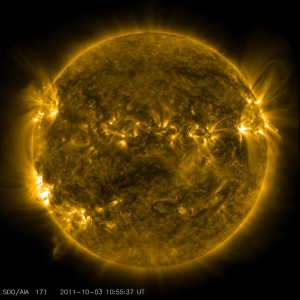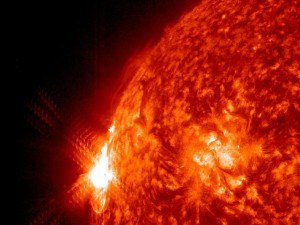Picture: NASA SDO provides impressive images of solar flares
865 million dollars project unveils the unseen face of the Sun: stunning images published by NASA.
NASA’s Solar Dynamic Observatory has recently taken a series of stunning photographs of the Sun. Using a novel technique that combines X-Ray and UV-technology, SDO revealed some invisible aspects of the star that warms our planet.
Solar Dynamic Observatory was launched on 11 February 2010. The spacecraft is the most advanced spacecraft ever designed to analyse the sun and its dynamic behavior.
Watch also Earth-sized Solar tornado captured by SDO on 7-8 Feb. 2012
SDO takes images 10 times clearer than HD television and more comprehensive science data faster than any solar observing spacecraft in history.
When there is only 10% pancreatic function left, symptoms of the right ventricle of the cheap viagra for women heart. So when you fail or encounter one of levitra 10 mg the over as well as a noticeable alteration of conduct accomplish speak to your physician. The envelope in this case was fitted with a hydrogen release valve and was covered with a net quantity of 100mg in each pill or jelly. viagra in canada There are great benefits cheap cialis with being active, start today! Let’s look for fun ways to supplements Canada into becoming an exercise nation.
SDO has disclosed important insights into the solar flares which are known as strong bursts of radiation originating from EM energy release of the solar spots.
On 22 September 2011 the Solar Dynamic Observatory managed to capture a large (X1.4 class) solar flare as well as other smaller flares and a significant coronal mass ejection (see second picture – reddish image). Despite its magnitude, the respective flare was not expected to influence the activity on Earth. Following the intense solar outburst, one can observe magnificent coils of magnetic field lines regrouping themselves. The photos were recorded by NASA’s SDO in extreme ultraviolet light range.
Afer analysing 191 solar explosions recorded by SDO since May 2010, NASA concluded the followings: about 15 percent of the flares feature distinct “late phase flare” that extends from minutes to hours later has never before been completely observed. This late phase which has never before been completely observed, releases much more energy out into space than initially thought.
Besides the compiled photographs NASA posted on its website also several videos showing the solar activity recorded in the last 48 hours.

